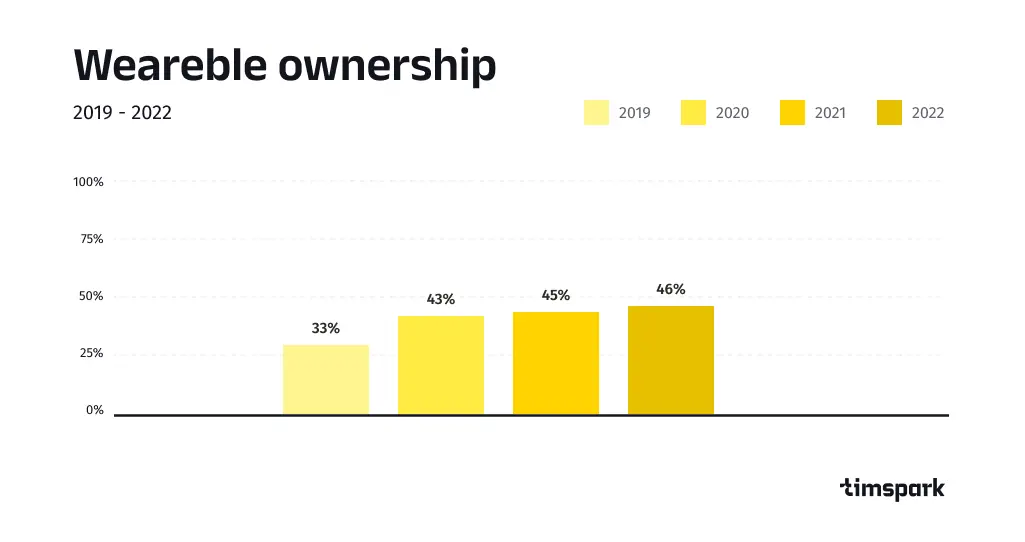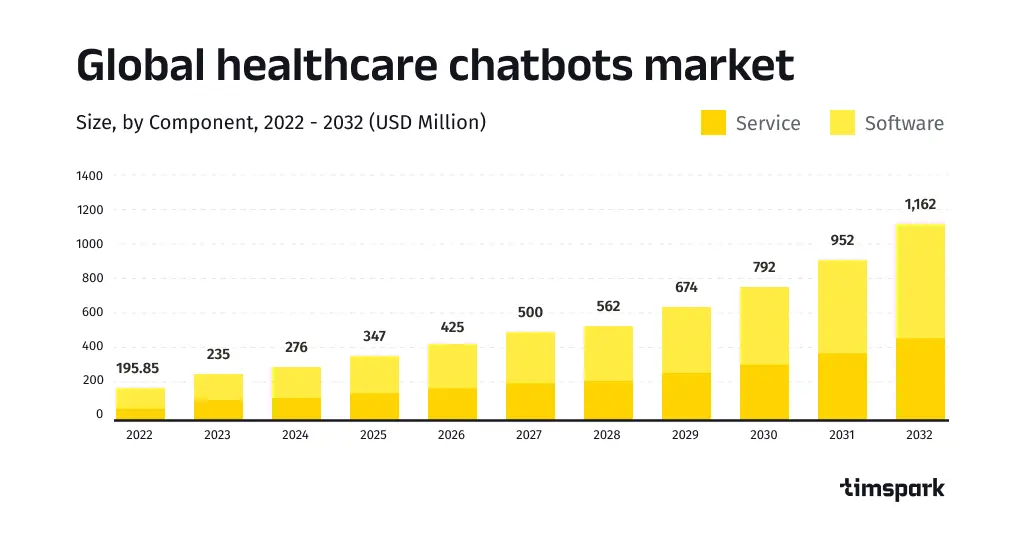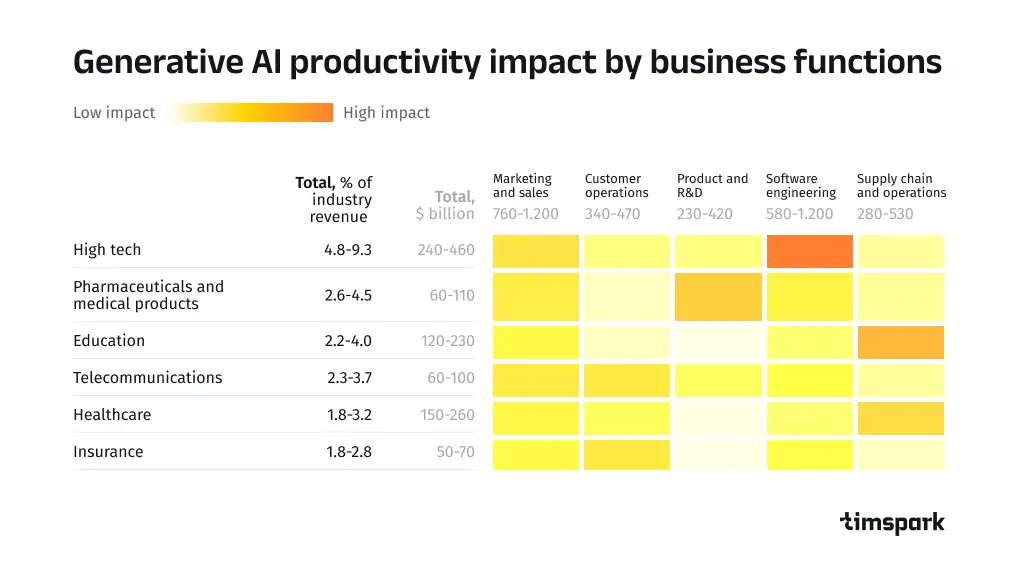Future of AI in Healthcare: Trends to Watch in 2025
March 24, 2025
Just 20 years ago, discussions about Artificial Intelligence (AI) were often perceived as science fiction. However, the latest achievements in IT and increased computing power have allowed breakthroughs in this area. AI has become a part of our lives, especially in such an important field as healthcare. Despite traditional conservatism in medicine, factors such as the aging population and the COVID-19 pandemic have made the use of AI not only possible but even necessary. Recently, the workload on medical staff has increased drastically, so an intelligent and tireless assistant came in handy. So, what is the future of AI in healthcare? Let’s delve into healthcare trends in 2023 and beyond.
AI Technology Trends in Healthcare
Among the digital trends in healthcare, it is worth noting the following ones:
- Telemedicine and IoMT for monitoring patients’ health
- Surgical robots with built-in AI
- Application of computer vision to patient care
- AI as a personal assistant
- Disease prevention using AI
- Neural networks for research and diagnostics
- Handwriting recognition for digitizing medical records
- AI for administrative tasks
Let’s look at these areas in more detail.
1. Telemedicine and IoMT for Monitoring Patients’ Health
The Internet of Medical Things (IoMT) has given impetus to the development of telemedicine. AI-integrated wearable devices connect to a secure network, allowing doctors to remotely collect patient health data, process it, and send back new recommendations. Moreover, these smart devices can operate relatively autonomously and instantly respond to deviations in a person’s condition, for example, monitoring heart rate or blood pressure. At the slightest suspicion that a patient is in danger, AI will alert a human doctor. Meanwhile, the server-based AI solution can process large volumes of data transmitted from hundreds of thousands of devices simultaneously while applying a personalized approach to monitoring each patient’s health.
According to the RockHealth.org study, about 80% of Americans accessed care via telemedicine. 46% of respondents reported having a wearable device to track their health condition. [1]
2. Surgical Robots with Built-in AI
Speaking of smart devices, it is worth mentioning surgical robots — these little assistants to surgeons can perform complex operations with minimal damage to the human body. The doctor still makes decisions during the surgery, but the manipulations and collection of the necessary data are carried out by microrobots. As a result, the patient can recover faster, and the risks of relapse are reduced.
Strategic Market Research reported that the share of robotic surgery in general surgery was 23% in 2022. The surgical robot market is valued at US$5.16 billion in 2021 and is projected to reach US$20.98 billion by 2030. [2]
3. Application of Computer Vision to Patient Care
The biggest problem in healthcare is that most people do not follow doctors’ orders. This is especially important when preparing for surgery, during the recovery period, or in the case of a chronic disease when the patient needs to perform certain activities on a schedule. And here, AI comes to the rescue. The widespread application of computer vision makes it possible to monitor how a person is taking prescribed medications.
According to Naturemedicine, about 70% of people with diabetes do not take insulin as prescribed. These results were obtained from an experiment using a wireless AI sensor. [3]
Moreover, artificial intelligence can recognize subtle signs of health problems in patients. It could be facial expressions, gestures, or asymmetries in walking that indicate the person is in pain. Such monitoring can be quite helpful for the elderly since accidental falls due to impaired postural stability can lead to bone fractures and shorten their life. [4]
4. AI as a Personal Assistant
The effectiveness of treatment directly depends on knowledge of the complete picture of a person’s health status. A virtual AI assistant can help a doctor select personalized therapy based on the patient’s data and accumulated records from millions of similar cases. This approach will be especially effective for the elderly.
The aging population has increased the burden on the medical industry, not only because seniors are getting sick more often but also because older people tend to be lonely, which leads to depression and hypochondria. Artificial intelligence can help here, too: a personal robot assistant will be available 24/7. Chatbots with the NLP function can successfully communicate with a person in their native language and, at the same time, catch markers of the patient’s instability by tone of speech or style of writing. This way, older people won’t feel abandoned, even hundreds of miles from a doctor. After all, AI does not know fatigue and has no prejudices.
The asthma app developed by our team is an example of AI-powered software that can be used as a virtual assistant for patients and medical staff. If you need something for broader use, the IBM Watsonx Assistant medical chatbot may be a good fit. [5]
Market.US predicts that the global healthcare chatbot market will reach US$1168 million by 2032. For reference, in 2022, it was valued at $195.85 million. [6]
5. Disease Prevention Using AI
In recent years, developed countries have been shifting their focus from treating diseases to preventing them. This issue is especially acute concerning heart stroke, which is still the number one killer. Round-the-clock monitoring of a person’s health, activity, and lifestyle can reduce mortality and prevent diseases. This approach became possible with the advent of wearable devices. Moreover, even a small amount of data collected by mobile phone sensors (such as gyroscope, accelerometer, etc.) can be processed by AI to prevent, for example, falls. An uneven gait may indicate cardiovascular disease, rheumatism, or even mental instability.
AI could help identify people who are at around 90% risk of sudden death and who account for more than 25% of all sudden cardiac deaths. [7]
Looking for healthcare software development?
6. Neural Networks for Research and Diagnostics
Prevention of diseases and assistance in patient care are special cases of the Research and Diagnostic field, where AI benefits the most. With machine learning approaches, including neural networks and deep learning, it is possible to derive non-trivial correlations in vast accumulated volumes of data. Artificial intelligence can now do what took research centers years to accomplish in days or even hours.
Of course, it would be unwise to exclude humans from this field: AI may discover an interesting relationship between a person’s diet and the risk of heart attacks or detect a suspicious spot on a patient’s X-rays, but the final decision rests with a human professional. Replacing the radiologist with a completely robotic solution risks false negatives, and it is also unethical. If the news is bad, the patient wants to hear it from a sympathetic person, not a soulless machine. Moreover, AI does not have the critical thinking inherent in humans and, therefore, cannot objectively evaluate the result obtained. The latter is essential for self-learning systems: AI cannot understand how to correct the data it is trained on. We all remember how ChatGPT 4 suddenly became dumber [9] after training on publicly available data on the Internet.
Nevertheless, the help of a superbrain in processing data, finding correlations, and even proposing innovations (for example, developing new drugs or vaccines) is invaluable. Such ready-made services as Microsoft AI Health can be used for these purposes. [10]
McKinsey research shows that AI can be beneficial for discovering new drug compounds. The use of artificial intelligence in the pharmaceutical and medical-product industries could potentially increase their productivity – from 2.6 to 4.5% of annual revenue or from $60 to $110 billion per year. [11]
7. Handwriting Recognition for Digitizing Medical Records
Electronic Health Records (EHR) will no longer surprise anyone. However, there is still quite a large amount of handwritten data that needs to be digitized and classified. AI can help recognize handwritten texts, and its self-learning abilities make it possible to decipher different handwriting of doctors. This doesn’t just apply to old records; it also applies to new ones. Despite global digitalization, it is sometimes more convenient for medical staff to write a treatment plan by hand or even create it verbally using speech recognition services, such as AWS HealthScribe. [12]
Future Market Insights states that EHR Software leads the US healthcare solutions market with approximately 63.3% share in 2022. The Electronic Health Records market in the United States is expected to reach $15.3 billion by 2033. [13]
8. AI for Administrative Tasks
Conveniently making an appointment with a doctor, timely ordering materials and medications, and processing insurance claims take up considerable time for medical personnel and are not always performed optimally. An AI assistant can save valuable human time and complete the above tasks more efficiently.
Has the doctor’s appointment schedule changed? The virtual assistant can call patients and find another convenient time for everyone or ensure that prosthetists order suitable materials on time. Artificial intelligence can monitor every stage of work and remind those in charge of the necessary steps. When analyzing insurance claims, AI plays a significant role in fraud prevention. Thus, AI-based solutions can improve the efficiency of routine tasks and reduce the number of human errors.
Today, healthcare workers spend up to 70% of their time performing routine administrative tasks. AI could help here by taking over about 50% of administrative tasks. [14]
Overall Impact of AI on Healthcare and Related Fields
The use of artificial intelligence is not limited to the above trends. AI is capable of:
- Improving approaches to medical education through personalization and integration with entertainment technologies such as VR/AR;
- Making insurance processes more transparent, which is very important for countries with developed insurance medicine;
- Helping in the development of high technologies and so on.
A McKinsey study [11] found the following impact of AI on healthcare and related fields:
- Artificial intelligence in software engineering can significantly reduce costs and speed up the process, which is extremely important for healthcare tech development.
- With the adoption of AI, supply chains and operations can become more transparent and seamless.
- Most of the tasks of attracting and retaining customers (or patients in the case of healthcare) can be delegated to virtual assistants.
- And we shouldn’t forget the contribution of AI in research and development, especially when we talk about pharmaceuticals and medical products.
According to McKinsey, AI can increase productivity in healthcare from 1.8 to 3.2% of annual revenue, or from $150 to $260 billion per year. [11]
Interested in Building Your Own AI Projects?
Would you like to launch your own AI startup but are unsure of success? AI projects, in general, are costly, and considering you’ll have to compete with the likes of Apple, Amazon, and Microsoft, does it make sense to invest in your idea?
Reviewing healthcare technology trends, we at Timspark believe it’s worth a try. Each project has its highlight (the so-called killer feature), and we can focus on it during development. At the same time, ready-made AI services can be integrated into your solution. This approach allows you to bring a product to market and test your idea quickly. As the popularity of the developed solution grows, third-party services may be replaced one by one. Meanwhile, the accumulated user data can be used to train your own AI software.
Timspark’s professionals with a computer science degree and experience in Python, Go, C++, Java, Rust, or other languages applicable to machine learning will be happy to support you on this challenging journey.
References
- Consumer adoption of digital health in 2022: Moving at the speed of trust. RockHealth.org, 2023.
- Top Robotic Surgery Statistics to Follow in 2023. Strategic Market Research, 2023.
- Assessment of medication self-administration using artificial intelligence. Nature Medicine, 2021.
- Falls and Fractures in Older Adults: Causes and Prevention. National Institute of Aging, 2022.
- IBM Watson Assistant for Health Benefits Data Sheet. IBM, 2018.
- Healthcare Chatbots Market. Market.US, 2023.
- Artificial intelligence may help predict – possibly prevent – sudden cardiac death. American Heart Association Resuscitation Science Symposium, 2023.
- Apple is reportedly developing an AI-powered health coaching service. Apple, 2023.
- Is ChatGPT getting dumber? Deutsche Welle, 2023.
- The Microsoft AI for Health program: Solving the world’s biggest health issues, one life at a time. Microsoft, 2023.
- The economic potential of generative AI: The next productivity frontier. McKinsey & Company, 2023.
- AWS Announces AWS HealthScribe, a New Generative AI-Powered Service that Automatically Creates Clinical Documentation. Amazon, 2023.
- USA Electronic Health Records Market Snapshot. Future Market Insights, 2023.
- Transforming healthcare with AI: The impact on the workforce and organizations. McKinsey & Company, 2020.




